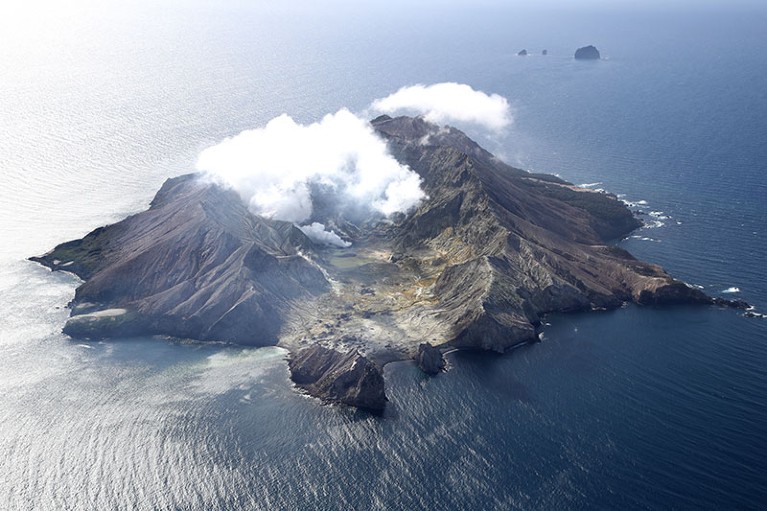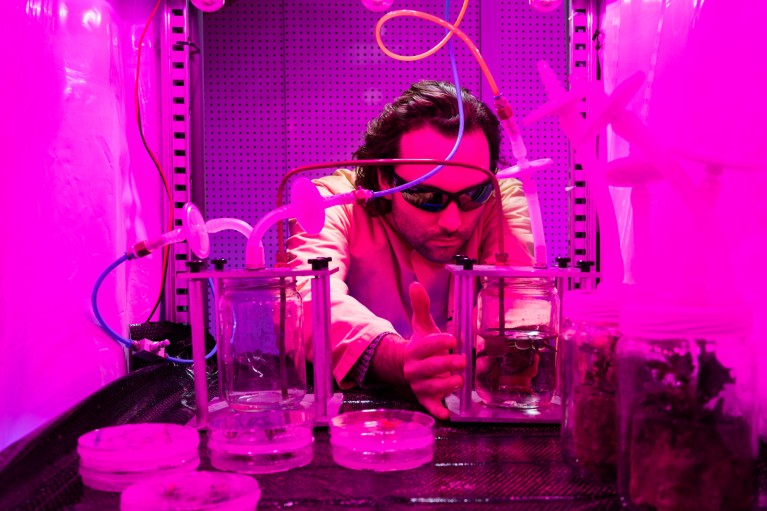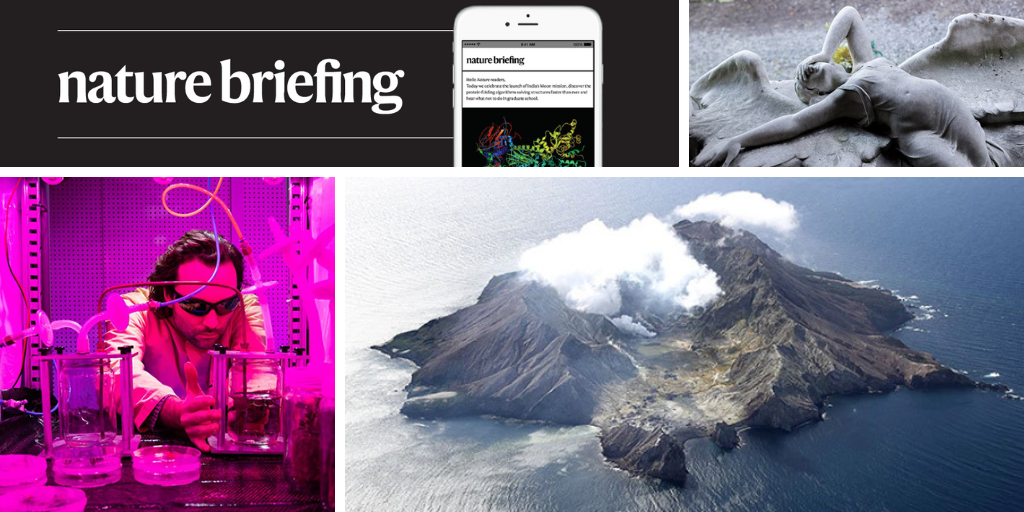Hello Nature readers, would you like to get this Briefing in your inbox free every day? Sign up here.

Whakaari White Island erupted in December 2019, killing 22 people and injuring 25 others.Credit: Phil Walter/Getty
New Zealand’s Earth-science research agency, GNS Science, has pleaded guilty to a reduced charge relating to workplace safety, laid against it after a fatal volcanic eruption on Whakaari White Island in December 2019. The charge, which was unrelated to the deaths, was about the way the agency communicated risk to helicopter pilots hired to fly fieldwork staff to the volcano. Volcanologist Kenneth Rubin says the charge is a reminder that those in his field should take care not to assume that non-specialists understand the risks. “It is very important to convey to them exactly what is going on.”
Roundworms need a good night’s sleep to remember smells. Caenorhabditis elegans worms that are taught to avoid a scent need 1–2 hours of undisturbed sleep after training. If they are deprived of their post-training nap, they won’t form long-lasting memories and, after 16 hours, will forget what they learnt. The research came with an unusual challenge: working out when the one-millimetre-long animals are in fact asleep. “The little worms become straight with just a little crook where their head is,” says cell biologist and co-author Noelle L’Etoile.
Air-quality monitoring stations that accidentally trap DNA from animals and plants could revolutionize wildlife tracking. The stations are ubiquitous in many countries and automatically capture atmospheric pollutants such as lead. They also catch small amounts of genetic material in the air, shed by living things. In samples collected at stations in two UK cities, researchers identified DNA from more than 180 animal, plant and fungal species. It’s a challenge to monitor biodiversity on large scales. Individual species are usually tracked in small regions using labour-intensive camera surveillance or in-person observations.
Reference: Current Biology paper
The James Webb Space Telescope (JWST) has spied a ‘smoke ring’ of polycyclic aromatic hydrocarbons in a faraway galaxy. The compounds, which are also found in soot and smoke, form near young, massive stars. Because the galaxy is so distant that it appears as it did when the Universe was just 10% of its current age, it must have been busy creating stars during that time. “It must have basically formed on overdrive,” says astronomer and co-author Justin Spilker.
Features & opinion
Many academic workplaces could better support researchers who are dealing with the death of a loved one. Institutions can help by having clear policies that are easy to find. Colleagues can also chip in by offering, for example, to arrange grocery deliveries — anticipatory support saves the bereaved colleague the burden of having to think of what they need. And return to work should be flexible. Some people might want to come back part-time at first; others prefer to focus on less intensive tasks or need a private workspace. “People deserve to be cared for by their workplace in that vulnerable time,” says organizational psychology researcher Stephanie Gilbert.
The US Supreme Court has gutted federal protection for wetlands. The court ruled in Sackett v. Environmental Protection Agency that the Clean Water Act applies to wetlands only:
• When they have a continuous surface connection to a permanent body of water. By some estimates, this requirement wipes out Clean Water Act coverage for more than half of the nation’s wetlands.
• And when it is “difficult to determine where the ‘water’ ends and the ‘wetland’ begins”. “As my colleagues and I explained in a brief submitted to the court on behalf of 12 scientific societies, wetland researchers can almost always determine where a body of water ends and a wetland begins,” writes law researcher Royal Gardner.
Now, projects that were denied because they decrease water quality, increase flood risk or eliminate habitats will be able to proceed without a federal permit. But there’s still time for state and local governments to act, argues Gardner. “Now is a crucial time for scientists and the public to educate state and local decision makers about how acutely we need wetlands,” he says.
Andrew Robinson’s pick of the top five science books to read this week includes an enjoyable, non-mathematical portrait of the neutrino — also known as the ghost particle — and a highly readable history of epidemic diseases and vaccinologists.
Where I work

Lucas van der Zee is a horticulture and product physiologist at Wageningen University, the Netherlands.Credit: Francesco Rucci and Francesco Marinelli for Nature
For growing his tomatoes, horticulture and product physiologist Lucas van der Zee was inspired by lab-made meat. “I wondered — if you can grow meat without an animal, can you grow fruit without a plant?” This might help to return some farmland, which takes up half of Earth’s hospitable land surface, to nature. An important part of his project will be to assess the method’s sustainability. “In the past, people have rushed into using food technologies, such as cage-grown chickens and the extensive use of synthetic fertilizer, without considering the potential downsides,” he says. (Nature | 3 min read)







More News
Judge dismisses superconductivity physicist’s lawsuit against university
Future of Humanity Institute shuts: what’s next for ‘deep future’ research?
Star Formation Shut Down by Multiphase Gas Outflow in a Galaxy at a Redshift of 2.45 – Nature